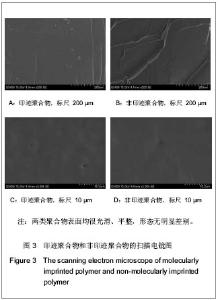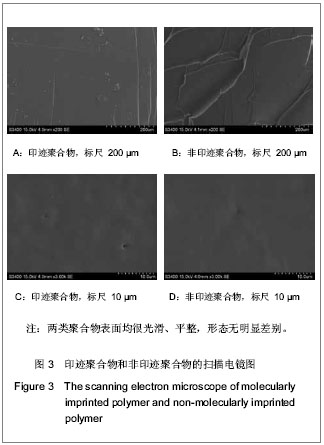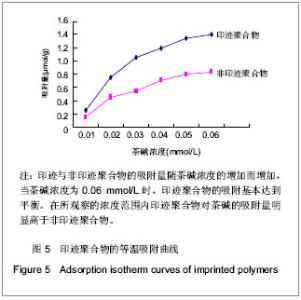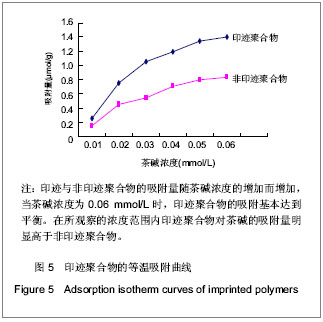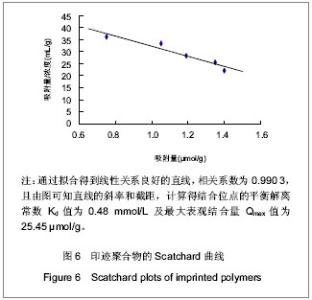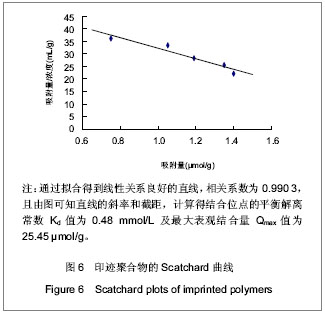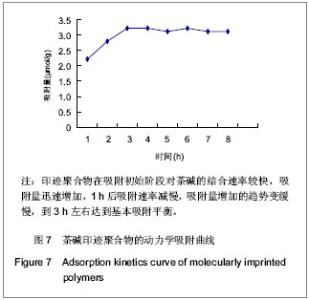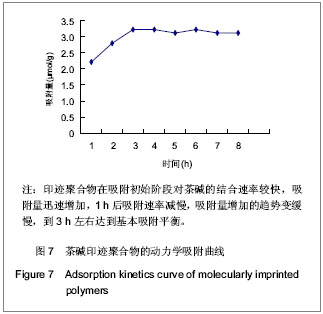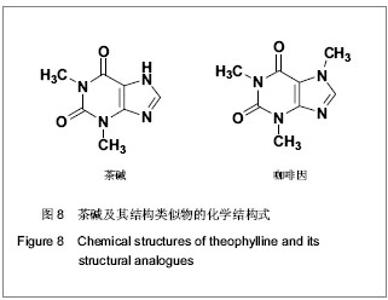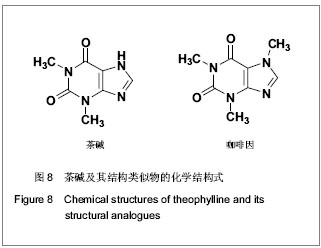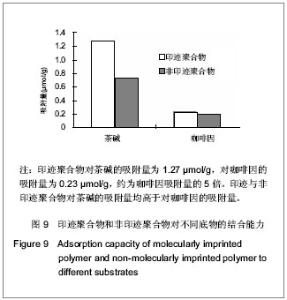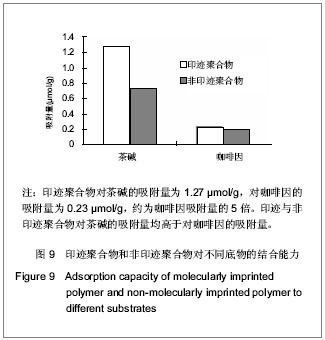Chinese Journal of Tissue Engineering Research
Previous Articles Next Articles
Preparation and evaluation of biodegradable molecularly imprinted polymers
Li Man, Zhu Quan-hong, Li Min-ting, Wang Wen-na, Dai Jiao-jiao, Yin Yong-guan
- School of Traditional Chinese Medicine, Southern Medical University, Guangzhou 510515, Guangdong Province, China
-
Received:2013-06-27Revised:2013-08-17Online:2013-09-17Published:2013-09-17 -
Contact:Zhu Quan-hong, M.D., Professor, School of Traditional Chinese Medicine, Southern Medical University, Guangzhou 510515, Guangdong Province, China zqh@sum.edu.cn -
About author:Li Man★, Master, School of Traditional Chinese Medicine, Southern Medical University, Guangzhou 510515, Guangdong Province, China liman887@163.com -
Supported by:the National Natural Science Foundation of China, No. 81173566*, 81102793*; the Scientific and Technological Plan of Guangzhou City, No. 12C32121549*
CLC Number:
Cite this article
Li Man, Zhu Quan-hong, Li Min-ting, Wang Wen-na, Dai Jiao-jiao, Yin Yong-guan. Preparation and evaluation of biodegradable molecularly imprinted polymers[J]. Chinese Journal of Tissue Engineering Research, doi: 10.3969/j.issn.2095-4344.2013.38.018.
share this article
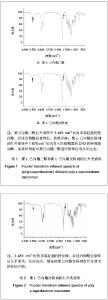
2.1 聚ε-己内酯交联剂 分析比较聚己内酯二醇和未经优化制备工艺交联剂的红外光谱图,聚己内酯二醇红外谱图中3 451 cm-1处为末端羟基的特征峰,经过丙烯酰化修饰后,仍然存在;交联剂的红外图谱中1 675 cm-1处为引入丙烯酰氯的C=O的伸缩振动峰,由此可判定对聚己内酯二醇进行修饰后为反应完全,见图1。 根据预实验结果,优化交联剂的制备工艺。聚己内酯二醇(M=2 000) 2 mmol溶于20 mL除水后苯中,常温搅拌的条件下用滴液漏斗加入溶解于3 mL苯中的 6 mmol丙烯酰氯,滴加完成后加入6 mmol三乙胺,升温至80 ℃恒温搅拌3 h。反应完成后过滤,将滤液倒入盛有80 mL正己烷的烧杯中,20 ℃下静置15 h后烧杯底部有白色蜡状的固体沉淀产生,将固体沉淀真空干燥 24 h备用。 对优化合成工艺制备的聚ε-己内酯交联剂进行红外表征,见图2。"
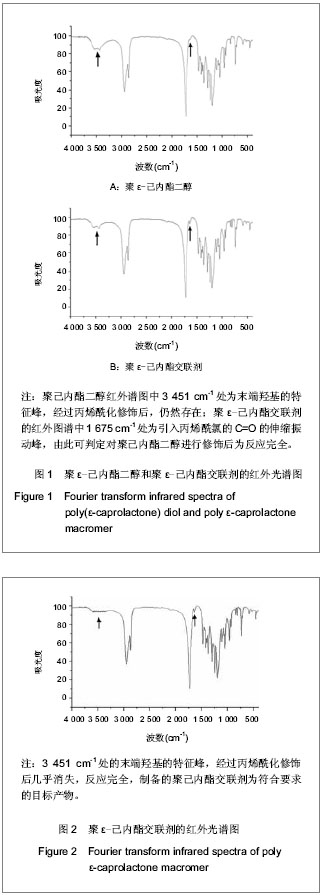
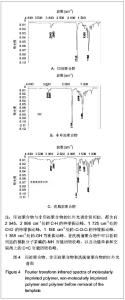
在所观察倍数下,两类聚合物表面均很光滑、平整,形态无明显差别。分析形成该形貌的原因,印迹水凝胶的组成中主要为聚合物骨架即丙烯酰化的交联剂,约占组成的95%,而模板分子茶碱的印迹空穴、功能单体丙烯酸等与聚己内酯交联剂相比所占比例很少,且分散在由此交联剂聚合而成的大环境中,因此较难观察到。 红外光谱表征:将印迹聚合物、非印迹聚合物及未移除模板分子的聚合物进行红外光谱测定,结果见图4。 由图4可以看出,印迹聚合物与非印迹聚合物的红外光谱非常相似,都含有2 945,2 866 cm-1处的C-H的伸缩振动峰,1 725 cm-1处的C=O的伸缩振动峰, 1 188 cm-1处的-C-O-C-的伸缩振动峰,1 368 cm-1处的-OH弯曲振动峰。这是由于两种聚合物的骨架基本相同,组成聚合物的官能团完全一样,都是由丙烯酰化的聚己内酯二醇为交联剂和丙烯酸为功能单体聚合而成,故两类聚合物的红外光谱未有明显区别。交联剂在聚合物中所占比重大,因此红外谱图显示的吸收峰主要来自交联剂。 此外,在图4A和图4B中,均未看到C=C双键的吸收峰,说明自由基聚合反应进行完全。在未洗脱模板分子的聚合物的红外谱图(图4C)中,除与两类聚合物相同的官能团外,还可以看到1 566 cm-1处的伯胺弯面内吸收峰和1 665 cm-1处碳碳双键的伸缩振动吸收峰,这是因为未洗脱模板分子的聚合物中,不仅含有模板分子,还含有残留的过量的反应原料功能单体及交联剂,因此在图4C中可看到明显的模板分子茶碱的-NH官能团吸收峰,以及功能单体和交联剂上的C=C官能团吸收峰。"
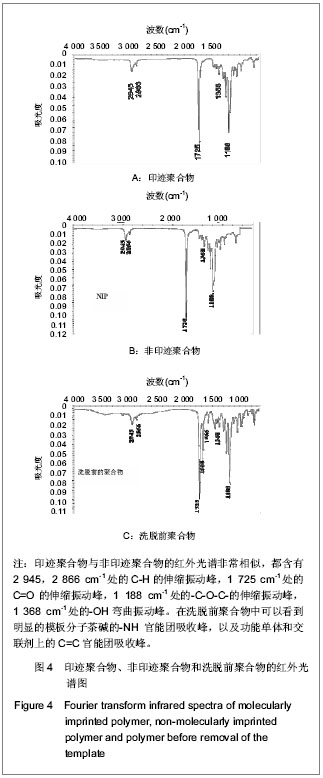
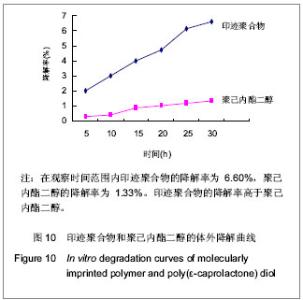
由图9可知,印迹聚合物对茶碱的吸附量为 1.27 μmol/g,对咖啡因的吸附量为0.23 μmol/g,约为咖啡因吸附量的5倍。印迹与非印迹聚合物对茶碱的吸附量均高于对咖啡因的吸附量。这是因为印迹聚合物不仅具有识别模板分子茶碱的官能团,能与茶碱发生相互作用,同时还留有模板分子茶碱的孔穴,与茶碱分子空间相匹配,因此对茶碱表现出专一的识别性;而对其结构类似物咖啡因的吸附仅表现为官能团的相互作用,由于空间结构的不匹配,因此吸附量很低。可见印迹聚合物不仅对模板分子茶碱具有良好的吸附性能,而且还对模板分子还表现出特殊的选择性能。 在茶碱印迹聚合物的识别过程中,底物的空间结构及官能团均会影响印迹聚合物对其的吸附。茶碱与咖啡因的化学结构非常相似,都具有嘌呤的母核,仅在取代基上存有微小差别,但印迹聚合物对二者却表现出完全不同的吸附性能。说明印迹聚合物对模板分子茶碱有明显的吸附选择性,这种选择性能不仅与模板分子和功能单体丙烯酸之间形成的氢键、静电作用有关,还与印迹聚合物的印迹空穴的空间匹配性有关,这些都是影响分子之间发生精确识别的重要因素。 2.6 印迹聚合物和聚己内酯二醇的体外降解曲线 见图10。 由图10可知在观察时间范围内印迹聚合物的降解率为6.60%,聚己内酯二醇的降解率为1.33%。印迹聚合物的降解率高于聚己内酯二醇是由于物聚合中占绝大部分的聚己内酯交联剂的降解速率高于聚己内酯二醇[33-35]。丙烯酰化的聚己内酯二醇降低了原有物质的结晶度,加快了降解速率。印迹聚合物在观察时间内有良好的生物降解性能。"
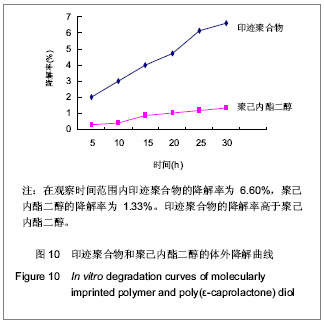
| [1] 王颖,李楠.分子印迹技术及其应用[J].化工进展,2010,29(12): 2315-2323. [2] 史瑞雪,郭成海,邹小红,等.分子印迹技术研究进展[J].化学进展,2002,14(3):182-191. [3] 闫有旺,于汝生.分子印迹技术及其应用[J].化学教学,2005,27(4): 28-30. [4] Puoci F,Cirillo G,Curcio M,et al.Molecularly Imprinted Polymers (MIPs) in Biomedical Applications.Biopolymers. 2010;28:547-574. [5] Langer R,Peppas NA.Advances in biomaterials, drug delivery, and bionanotechnology.AIChE J.2003;49(12):2990-3006. [6] 张粉艳,郝红,粱国正.应用于药物控释系统中的生物降解高分子材料[J].离子交换与吸附,2003,19(2):189-192. [7] Cunliffe D,Kirby A,Alexander C.Molecularly imprinted drug delivery systems.Adv Drug Deliv Rev.2005;57:1836-1853. [8] 张勇,周建平.分子印迹给药系统研究进展[J].中国药学杂志, 2006, 41(21):1605-1609. [9] Hilt JZ,Byrne ME.Configurational biomimesis in drug delivery: molecular imprinting of biologically significant molecules.Adv Drug Deliv Rev.2004; 56:1599-1620. [10] Singh B,Chauhan N.Preliminary evaluation of Molecular Imprinting of 5-fluorouracil within hydrogels for use as drug delivery systems.Acta Biomaterialia.2008;4(5):1244-1254. [11] Van-nostrum CF.Molecular imprinting:a new tool for drug innovation. Drug Discov Today Technol.2005;2(1):119-124. [12] Norell MC,Andersson HS,Nicholls IA.Theophylline molecularly imprinted polymer dissociation kinetics: a novel sustained release drug dosage mechanism.J Mol Recognit. 1998;11:98-102. [13] Cirillo G,Curcio M,Parisi OI,et al. Gastro-intestinal sustained release of phytic acid by molecularly imprinted microparticles. Pharm Dev Technol.2010;15(5):526-531. [14] Cirillo G,Parisi OI,Curcio M,et al.Molecularly imprinted polymers as drug delivery systems for the sustained release of glycyrrhizic acid.J Pharm Pharmacol.2010;62(5):577-582. [15] Cirillo G,Iemma F,Puoci F,et al.Imprinted hydrophilic nanospheres as drug delivery systems for 5-fluorouracil sustained release.J Drug Target.2009;17(1):72-77. [16] Yin J,Cui Y,Yang G,Wang H.Molecularly imprinted nanotubes for enantioselective drug delivery and controlled release.Chem Commun (Camb). 2010;46(41):7688-7690. [17] Kan X,Geng Z,Zhao Y,et al.Magnetic molecularly imprinted polymer for aspirin recognition and controlled release. Nanotechnology. 2009;20(16):165601. [18] 凌霞,李红萍,郭娟,等.左旋甲基多巴分子印迹微球给药系统的合成、表征及药物缓释研究[J].化学学报,2010,68(1):95-101. [19] Jantarat C,Tangthong N,Songkro S,et al.S-Propranolol imprinted polymer nanoparticle-on-microsphere composite porous cellulose membrane for the enantioselectively controlled delivery of racemic propranolol.Int J Pharm. 2008;349:212-215. [20] Suedee R,Jantarat C,Lindner W,et al.Development of a pH-responsive drug delivery system for enantioselective-controlled delivery of racemic drugs.J Control Release.2010;142(1):122-131. [21] Suedee R,Bondhibukkana C,Tangthong N,et al.Development of a reservoir-type transdermal enantioselective-controlled delivery system for racemic propranolol using a molecularly imprinted polymer composite membrane.J Control Release. 2008;129(3):170-178. [22] 王晓青,高永良.手性控释给药系统的研究进展[J].中国医药导刊, 2008,10(3):426-427. [23] Yañez F,Martikainen L,Braga ME,et al.Supercritical fluid-assisted preparation of imprinted contact lenses for drug delivery.Acta Biomater.2011;7(3):1019-1130. [24] Ali M,Byrne ME.Controlled release of high molecular weight hyaluronic Acid from molecularly imprinted hydrogel contact lenses.Pharm Res. 2009;26(3):714-726. [25] Wang C,Javadi A,Ghaffari M,et al. A pH-sensitive molecularly imprinted nanospheres/hydrogel composite as a coating for implantable biosensors. Biomaterials.2010;31(18):4944-4951. [26] 艾哈麦提•玉素甫,王振斌,朱良.可生物降解材料聚己内酯在医学上的应用进展[J].国外医学:生物医学工程分册,2005,28(1): 19-23. [27] 宋存先,王彭延,孙洪范,等.聚己内酯在体内的降解、吸收和排泄[J].生物医学工程学杂志,2000,17(1):25-29. [28] 王永亮,易国斌,康正,等.聚己内酯的合成与应用研究进展[J].化学与生物工程,2006,26(3):1-3. [29] 刘峰,卓仁禧.水凝胶的制备及应用[J].高分子通报,1995,12(4): 205-216. [30] 王铁,张黎明.医用高分子水凝胶的设计与合成[J].功能高分子学报,2004,17(2):330-336. [31] 许志峰,吴双,吴小辉,等.二茂铁甲酸分子印迹聚合物的制备、识别机理和结合特性[J].应用化学,2010,27(4):384-389. [32] 蒲家志,李丹.非洛地平分子印迹聚合物的制备及其识别特性[J].凯里学院学报,2009,27(3):37-38. [33] Kweon H,Yoo MK,Park IK,et al.A novel degradable polycaprolactonenetweeks for tissue engineering. Biomaterials. 2003;24:801-808. [34] Woodward SC,Brewer PS,Moatamed F,et al.The intracellular degradation of poly(ε-caprolactone).J Biomed Mater Res. 1985;19(4):437-444. [35] Pitt CG,Gratzei MM,Kimmei GL,et al.Aliphatic polyesters Ⅱ: the degradation of poly(DL-lactide),poly(ε-caprolactone), and their copolymers in vivo.Biomaterials.1981;2:215-220. |
| [1] | Chen Jiana, Qiu Yanling, Nie Minhai, Liu Xuqian. Tissue engineering scaffolds in repairing oral and maxillofacial soft tissue defects [J]. Chinese Journal of Tissue Engineering Research, 2021, 25(4): 644-650. |
| [2] | Lang Limin, He Sheng, Jiang Zengyu, Hu Yiyi, Zhang Zhixing, Liang Minqian. Application progress of conductive composite materials in the field of tissue engineering treatment of myocardial infarction [J]. Chinese Journal of Tissue Engineering Research, 2021, 25(22): 3584-3590. |
| [3] | Yuan Bo, Wang Zhiwei, Tang Yifan, Zhou Shengyuan, Chen Xiongsheng, Jia Lianshun. Construction of polycaprolactone-tricalcium phosphate with different mixture ratios using three-dimensional printing technology and its osteoinductivity in vitro [J]. Chinese Journal of Tissue Engineering Research, 2019, 23(6): 821-826. |
| [4] | He Yue, Hou Zengmiao, Li Xiaoying, Gao En, Liu Jianli, Zhao Jinli. Preparation and properties of recombinant collagen sponge [J]. Chinese Journal of Tissue Engineering Research, 2019, 23(6): 912-916. |
| [5] | Wang Yang, Nie Jinshan, Gu Zhun, Zhu Kai. Construction and in vitro evaluation of a biodegradable cationic gene delivery system based on hyperbranched polyamidoamine [J]. Chinese Journal of Tissue Engineering Research, 2019, 23(6): 936-944. |
| [6] | Leng Yi, Li Zuhao, Ren Guangkai, Wang Zhonghan, Gao Chaohua, Shi Chenyu, Liu He, Wu Dankai. Application and progress of bioactive scaffolds in bone tissue engineering [J]. Chinese Journal of Tissue Engineering Research, 2019, 23(6): 963-970. |
| [7] | Xiong Ying, Xu Yan, Zhou Jianping, Zhang Xujing, Wang Kedian. Electroactive biomaterials in tissue engineering research [J]. Chinese Journal of Tissue Engineering Research, 2019, 23(34): 5523-5530. |
| [8] | Hu Kang, Zhang Wei. Collagen as a medical biomaterial in tissue repair, regeneration and reconstruction [J]. Chinese Journal of Tissue Engineering Research, 2019, 23(2): 317-322. |
| [9] | Wei Wei, Liu Yanfei, Zhang Ling, Xiong Na . Self-assembling peptide hydrogel: hemostatic effect and mechanism [J]. Chinese Journal of Tissue Engineering Research, 2019, 23(2): 310-316. |
| [10] | Fang Ying, Liu Changcheng, Gu Chengxiong, Yu Yang, Li Zhenfeng, Xu Huanming, Chen Duanduan. Effects of adventitial glutaraldehyde cross-linking on biomechanical properties of human saphenous vein graft [J]. Chinese Journal of Tissue Engineering Research, 2019, 23(2): 226-231. |
| [11] | Zhang Minbo, Peng Qifeng, Ma Yaping, Kong Weijun, Liao Wenbo. Physical properties and biocompatibility of 3D printed bone microparticle/poly(lactic-co-glycolic acid) scaffold [J]. Chinese Journal of Tissue Engineering Research, 2019, 23(14): 2215-2222. |
| [12] | Li Zhi, Tan Chunhua, Cai Xianhua, Wang Huasong, Ding Xiaoming, Zhao Yanhong. Fabrication and biocompatibility assessment of the scaffold with biomimetic interconnected macropore structure [J]. Chinese Journal of Tissue Engineering Research, 2019, 23(14): 2223-2227. |
| [13] | Bai Yulong, Gao Yufeng, Zhong Hongbin, Zhao Yantao, Guo Ruizhou, Li Li. Allogeneic and xenogeneic tissue repair materials: how to choose a suitable virus inactivation process [J]. Chinese Journal of Tissue Engineering Research, 2019, 23(14): 2261-2268. |
| [14] | Luo Kai, Yang Yafeng, Ma Teng, Xia Bing, Huang Liangliang, Huang Jinghui, Luo Zhuojing. Effects of perfluorotributylamine/alginate/bioglass biomaterials on viability and osteogenic differentiation of adipose-derived stem cells [J]. Chinese Journal of Tissue Engineering Research, 2019, 23(13): 1995-2001. |
| [15] | Wang Yuanyuan, Song Wenshan, Yu Dejun, Dai Yuankun, Li Bafang. Preparation and evaluation of fish skin acellular dermal matrix for oral guided tissue regeneration [J]. Chinese Journal of Tissue Engineering Research, 2019, 23(10): 1526-1532. |
| Viewed | ||||||
|
Full text |
|
|||||
|
Abstract |
|
|||||
